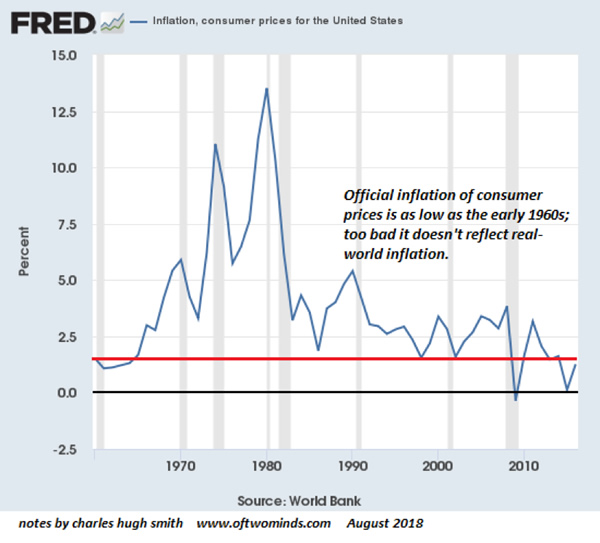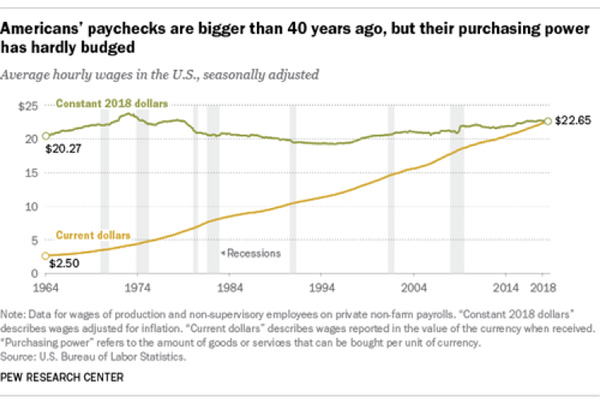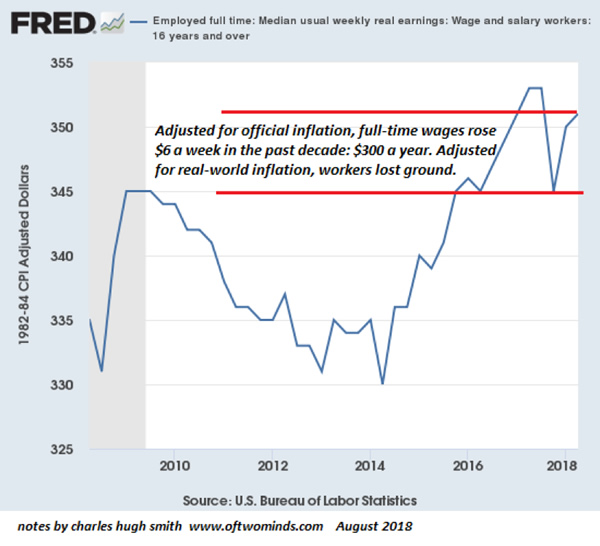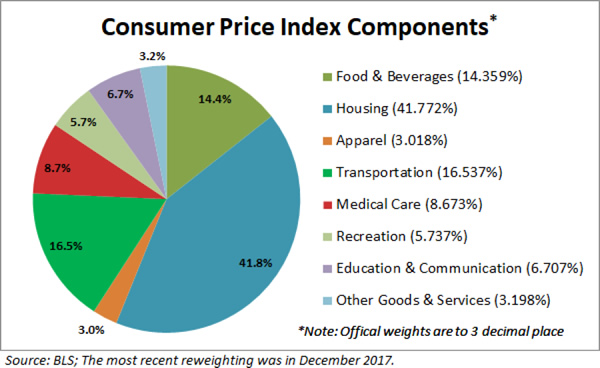
Sandusky Register
The Coming Inflation Threat: The Worst Of Both Worlds
Historically, 2.5% is about as low as inflation gets in a mass-consumption economy like the U.S. that depends on the constant expansion of credit.

But even 2.5% annually can add up if wages are stagnant. According to the Bureau of Labor Statistics (BLS), what cost $1 in January 2009 now costs $1.19. https://www.bls.gov/data/inflation_calculator.htm
That 19% decline in the purchasing power of dollars is tolerable as long as wages go up by 20% over the same period, but for many American households, wages haven’t kept pace with official inflation.

While the nominal hourly wages keep rising, adjusted for inflation, wages have stagnated for decades. Here’s a chart based on BLS data that shows median weekly earnings adjusted for official inflation rose $6 a week after five years of decline:

But stagnant wages are only part of the inflation picture: official inflation under-represents real-world inflation on several counts.
First, the weightings of the components in the Consumer Price Index (CPI) are suspect. Many commentators have explored this issue, but the main point is the severe underweighting of expenses such as healthcare, which is only 8.67% of the CPI but over 18% of the U.S. Gross Domestic Product (GDP).

Second, the “big ticket” components—rent/housing, healthcare and higher education—are under-reported for those who have to pay the unsubsidized cost. The CPI reflects minor cost decreases in tradable commodity goods such as TVs and clothing that are small parts of the family budget, while minimizing enormous expenses such as college tuition and healthcare that can cost $20,000 annually or more.
…click on the above link to read the rest of the article…